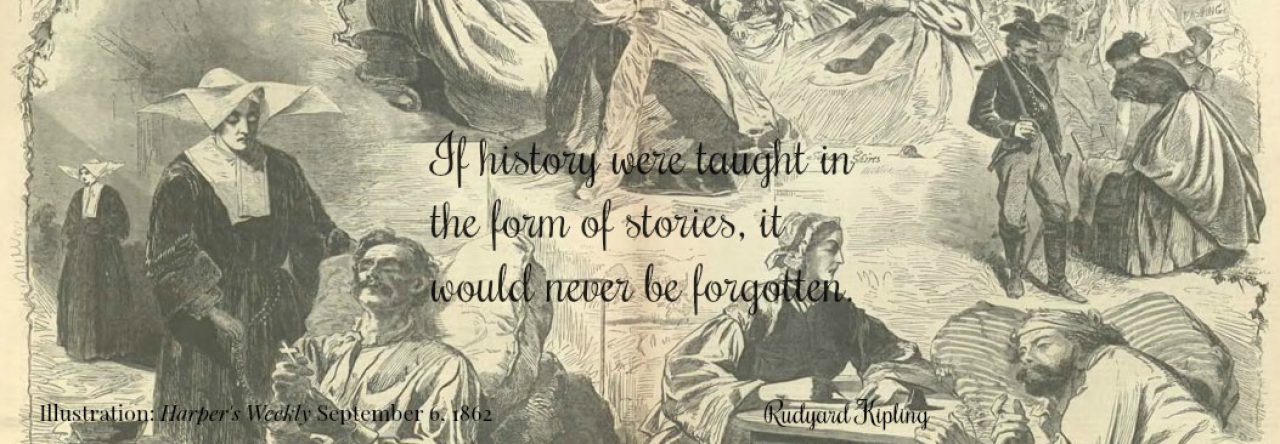
HIST 511: Digital History was a good choice for this first semester graduate student. A bit of the familiar, a lot of challenge – and a few snow days thrown in the mix. Here are a few of my takeaways from this course:
The study of digital history forces you to think more critically about all history.
In focusing on the authority and validity of digital sources and presentations, I’ve become much more focused on questioning the ‘traditional’ archives and sources I work with. Bias towards what content is made available and how it is presented doesn’t just apply to the realm of digital history.
Traditional academe needs to get moving.
Digital history doesn’t just have to be about showing some slides or a Power Point presentation or viewing a video during class time. Giving students the option to do class assignments in digital format (vs. the ‘traditional’ research paper or essay format) can be rewarding for both the student and professor. Digital presentations – whether audio, video, slide presentations or a combination of all or some – take the same amount of research, analysis and critical thinking that’s required of properly formatted, Chicago-style paper. If the actual goal of the course is to write a scholarly research paper, so be it. If achievement expectations can be expressed in an alternate, digital format then go for it.
And seriously . . . you read/recite papers at scholarly conferences? Don’t get me started again!
Digital academics are an excellent platform for interdisciplinary work.
As we learned from Dr. Hermes’ presentation. being able to reach out and work with other disciplines can not only further your own research but also get students and scholars in other fields interested in history. As I’ve written in a previous blog post (Make History Resonate), students enrolled in different disciplines working together on a shared digital project are given opportunities to expand their perspective and interests. Shouldn’t that be part of the collegiate experience?
Digital history is a great way to tell the story.
Stop and consider how much of our information across all aspects of our lives are delivered as stories – broadcast news, conversations with friend and families, marketing – “let me tell you [the story about] why you should be buying this product.” In the many (many) decades I’ve been on the planet, I’ve yet to meet a historian (amateur or professional) who doesn’t want to let other people know about what they’ve learned. Digital platforms provide a whole myriad of tools to get the stories out there and out to a much larger audience.
Digital history is demanding work.
Since social media and editing a blog have been part of my work back in the ‘real world,’ I knew from the start of this course that writing and posting a blog every week would be a challenge. And more time consuming that just writing 600 words of text or spending the time in class to come up with 3 credit hours a week. Write, re-write, find some images, insert web links, re-write again. If you subscribe and/or follow any bloggers, vloggers or podcasters, you’ll invariably come across a message from them at some point apologizing for not having been able to keep up with a regular posting of their work.
The exercise has been worth the effort. Knowing that I would be producing a blog for every assignment forced me to be hyper-critical and analytical of the content as I was reading or viewing it, skills that are needed for research and learning whether digital or not.
Digital history is here to stay and will very much be a part of my work as a historian.
And don’t be surprised if I take to preaching the ‘gospel’ of digital history in my future work.



 historians can utilize. As an off-shoot of Apple’s iPod’s music downstreaming technology, podcasts are enjoying an impressive popularity that can be attributed, in part, to a decrease in screen time viewing and the rapidly increasing connectivity of audio devices in automobiles (as cars have essentially become computers on wheels). In parallel with the thriving industry of the audio book, podcasts provide a platform for historians to reach an audience with a vast array of demographics.
historians can utilize. As an off-shoot of Apple’s iPod’s music downstreaming technology, podcasts are enjoying an impressive popularity that can be attributed, in part, to a decrease in screen time viewing and the rapidly increasing connectivity of audio devices in automobiles (as cars have essentially become computers on wheels). In parallel with the thriving industry of the audio book, podcasts provide a platform for historians to reach an audience with a vast array of demographics.




